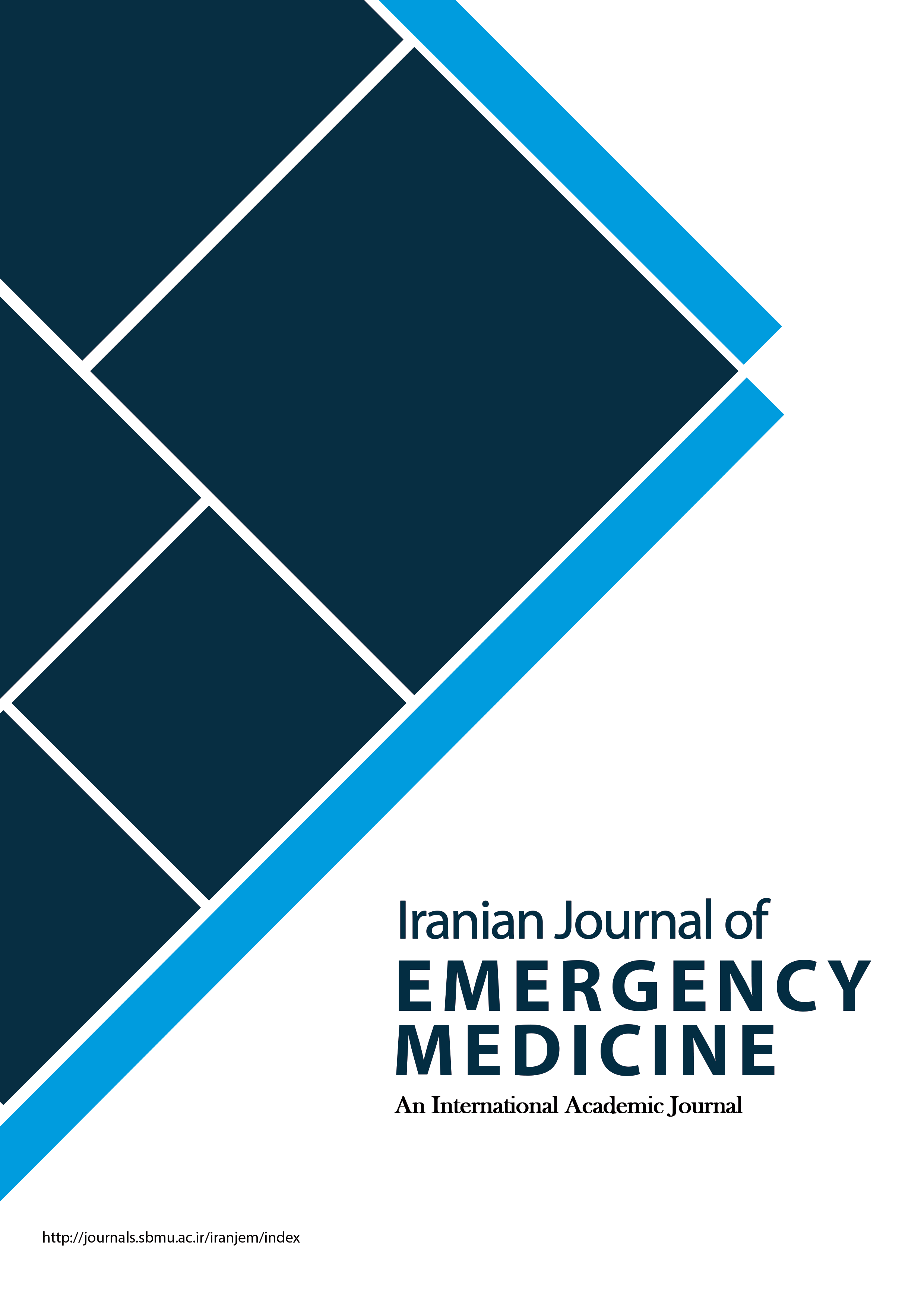Obstacles and Facilities of Mild Therapeutic Hypothermia Induction Following Successful Cardiopulmonary Resuscitation; a Feasibility Study
Iranian Journal of Emergency Medicine,
Vol. 5 No. 1 (2018),
8 February 2018
,
Page e14
https://doi.org/10.22037/ijem.v2i1.18337
Abstract
Introduction: Based on the protocol of American Heart Association (AHA), target temperature of 32°C to 36°C for at least 24 hours should be provided, continuously, for all cases of spontaneous return of blood flow following successful cardiopulmonary resuscitation (CPR) in adult patients with evident altered level of consciousness. Therefore, the present study was done to evaluate the obstacles and assess the possibility of performing this protocol for patients in emergency department. Methods: This study was a qualitative research that consisted of 2 phases. In the first phase, by meeting the specialists involved with these patients, a standard questionnaire was filled regarding the obstacles to performing this protocol from their viewpoint. In the second phase, hypothermia protocol was done on a sample of eligible patients in emergency department. The aim of this phase was to find the problems of doing this protocol in real practice. The findings were reported using descriptive statistics. Results: A total of 100 questionnaires were filled. Lack of experience or needing more information with 58%, limited facilities and equipment with 46% and lack of a national protocol with 24%, respectively, were the most important obstacles from the specialists’ point of view. In addition, losing golden time (57.14%), the in charge attend not giving permission (28.57%), and the relatives not giving consent (14.28%) were among the most important obstacles in the executive phase. Conclusion: Based on the findings of the present study, it seems that training the physicians involved with these patients regarding induction of hypothermia with the primary equipment present in emergency departments, writing inter-department protocols and preparing national protocols in this regard can help in spreading this treatment method.- ارست قلبی؛ احیاء قلبی ریوی؛ القاء هیپوترمی درمانی؛ هیپوکسی مغزی
How to Cite
References
Hegnauer A, D'Amato HE. Oxygen consumption and cardiac output in the hypothermic dog. American Journal of Physiology--Legacy Content. 1954;178(1):138-42.
Group HaCAS. Mild therapeutic hypothermia to improve the neurologic outcome after cardiac arrest. N Engl J Med. 2002;2002(346):549-56.
Becker LB, Smith DW, Rhodes KV. Incidence of cardiac arrest: a neglected factor in evaluating survival rates. Annals of emergency medicine. 1993;22(1):86-91.
Wolfrum S, Radke PW, Pischon T, Willich SN, Schunkert H, Kurowski V. Mild therapeutic hypothermia after cardiac arrest—a nationwide survey on the implementation of the ILCOR guidelines in German intensive care units. Resuscitation. 2007;72(2):207-13.
Wright WL, Geocadin RG, editors. Postresuscitative intensive care: neuroprotective strategies after cardiac arrest. Seminars in neurology; 2006: Copyright© 2006 by Thieme Medical
Publishers, Inc., 333 Seventh Avenue, New York, NY 10001, USA.
Callaway CW, Donnino MW, Fink EL, Geocadin RG, Golan E, Kern KB, et al. Part 8: Post–Cardiac Arrest Care. Circulation. 2015;132(18 suppl 2):S465-S82.
Kleinman ME, Brennan EE, Goldberger ZD, Swor RA, Terry M, Bobrow BJ, et al. Part 5: Adult basic life support and cardiopulmonary resuscitation quality. Circulation. 2015;132(18 suppl 2):S414-S35.
Kory P, Weiner J, Mathew JP, Fukunaga M, Palmero V, Singh B, et al. A rapid, safe, and low-cost technique for the induction of mild therapeutic hypothermia in post-cardiac arrest patients. Resuscitation. 2011;82(1):15-20.
Soleimanpour H, Rahmani F, Safari S, Golzari S. Hypothermia after cardiac arrest as a novel approach to increase survival in cardiopulmonary cerebral resuscitation: a review. Iranian Red Crescent Medical Journal. 2014;16(7):e17497-e.
- Abstract Viewed: 462 times
- PDF (فارسی) Downloaded: 264 times
- HTML (فارسی) Downloaded: 75 times



